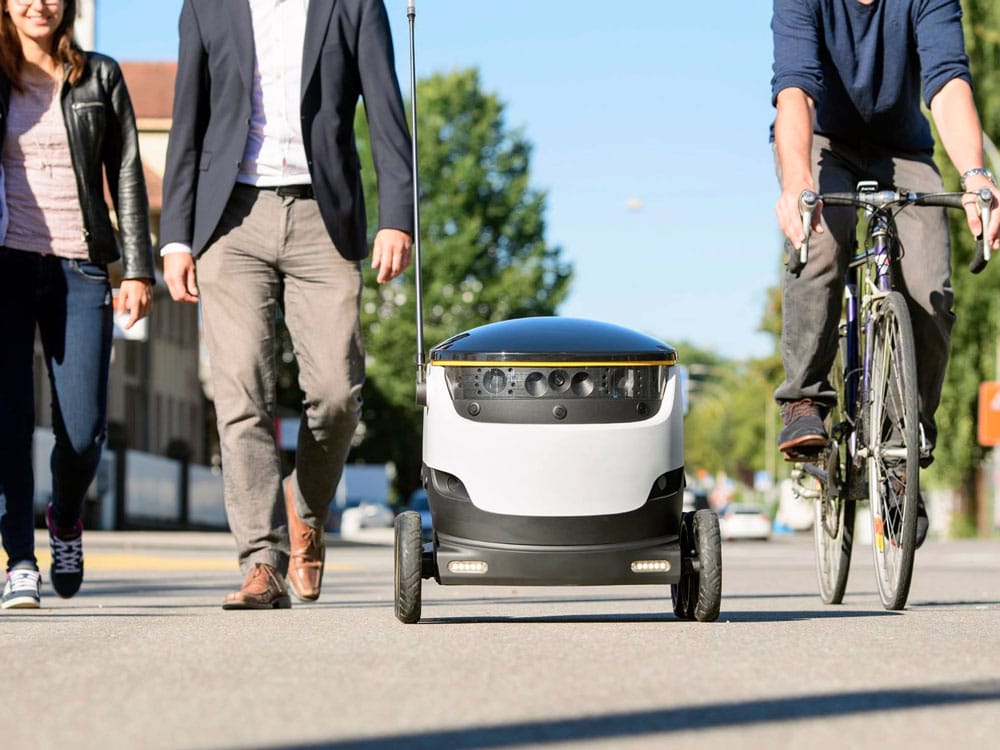Move over pedestrians, Bezos has stuff to deliver

In cities across the world, from London to Beijing, delivery robots have been deployed in order to test out a service that could potentially remove human interference from the last leg of the delivery process, which is often the most costly and problematic. Unsurprisingly, Amazon constitutes one of the pioneers on the delivery-robot front, and earlier this year the company has launched a fleet of mini six-wheeled robots named Amazon Scout, which trailed the streets of Snohomish County, Washington. Throughout the trials, Amazon Scouts carried anything from groceries and ice chests to packages and delivered them to customers’ homes (under the supervision of human babysitters). Yet, uncertainty lingers regarding the robots’ future and chances of success.
Under the current shopping climate, it is understandable why the notion of having robots deliver our goods has surfaced. Over the past several years, people across the globe have drastically increased their reliance on online-shopping services, and now expect products to arrive swiftly to their doorsteps. The rising demand in delivery services resulted in congestion of city streets that are inundated with vehicles dispatching packages. In an interview for Scientific American, Paul Mackie, Director of Research and Communications at the Arlington, Virginia Mobility Lab, said that “Deliveries are trending upwards in all dense city centres, and if city and state leaders don’t start thinking about innovations like robot deliveries, we can expect even worse traffic jams when we’re all trying to get places.” Mackie suggests that by transferring delivery devices to the sidewalks from the roads, cities would significantly reduce both parking and traffic issues.
Naturally, it isn’t traffic congestion that keeps online retail giants up at night, but profits, and it is a growing assumption that by entrusting robots with last-mile delivery tasks, companies could save a significant amount of dough. The New York-based firm McKinsey & Company issued a report last year in which it contends that once manufacturing of such robots is streamlined and technology enables them to become completely autonomous, companies such as Amazon would save billions of dollars in expenses.
Amazon isn’t alone in the race, however. One of Bezos’ sworn enemies is the San Francisco and Estonia- based Starship Technologies, whose robots have to date carried out an estimated 25,000 deliveries. Starship’s robots, which look like what would happen if Stormtrooper and R2-D2 had a child, operate on a cocktail of machine-learning software, sensors, and embedded digital maps, which enable them to navigate city streets with virtually no human supervision.

But for all the hype around them, the miniature space-freaks that have made appearances on sidewalks across the world still face major challenges that may prevent them from revolutionising the delivery business. One major obstacle facing Amazon Scout and its robo-siblings is how to navigate crowded, often bumpy, urban sidewalks without disruption and accidents. Spontaneous encounters between an absent-minded child or pet and a scurrying robot could prove to be more than unpleasant.
Other than having to perfect their urban strutting skills, delivery robots are expected to encounter another obstacle: human cruelty. Already, videos surfaced of people violating and harassing the robots— disrupting their routes, taunting, and kicking them. Another big issue facing the army of delivery robots is that they may prove to be defenceless against robbery attempts (although some have suggested that automatic locking mechanisms could potentially protect them from thieves).
It remains to be seen whether the pros will outweigh the cons as far as delivery robots are concerned. So far, communities have been sceptical about the little creatures and city governments have been stingy with the number of permits they grant companies to unleash their automated delivery pets in the streets.
What is missing from the debate, however, is a voice questioning the delivery-robot enterprise not merely from a practical standpoint, but from a moral and ecological one. It is troubling that while both companies’ and the public’s attention is focused on smoothing out the delivery process, very little thought is attributed to the fact that such initiatives divert us further away from serious contemplation about the consequences of our online shopping frenzy. We forget that what truly needs to be resolved isn’t the speed and efficiency of delivery, but the volume and frequency of our out-of-control consumption habits, which, whether or not we care to admit it, lead us to our own undoing.




